How do you get rid of a swollen eye. Swollen Eyelid: Causes, Treatments, and Prevention Tips
What causes a swollen eyelid. How can you treat a swollen eyelid at home. When should you seek medical attention for a swollen eyelid. What are the most effective remedies for reducing eyelid swelling. How long does it typically take for a swollen eyelid to heal. What are the potential complications of an untreated swollen eyelid.
Common Causes of Swollen Eyelids
Swollen eyelids can be caused by various factors, ranging from minor irritations to more serious medical conditions. Understanding the underlying cause is crucial for effective treatment. Here are some of the most common reasons for eyelid swelling:
- Allergies
- Insect bites
- Fluid retention
- Conjunctivitis (pink eye)
- Chalazion (blocked oil gland)
- Periorbital or orbital cellulitis
- Trauma or injury
- Lack of sleep
In some cases, medical conditions such as Graves’ disease or, rarely, eye cancer can also lead to eyelid swelling. It’s important to note that if swelling persists for more than 24 to 48 hours, consulting an eye care professional is recommended to avoid potential complications.

Effective Home Remedies for Swollen Eyelids
For many cases of swollen eyelids, especially those caused by non-infectious factors like fluid retention or allergies, home remedies can be highly effective. Here are some tried-and-true methods to reduce eyelid swelling:
- Apply a cool compress to the affected area
- Use chilled black tea bags as a natural remedy
- Rinse eyes with saline solution to remove discharge
- Elevate your head while sleeping to reduce fluid retention
- Try over-the-counter antihistamines for allergy-related swelling
- Remove contact lenses if you wear them
These home remedies can provide relief and help reduce swelling in many cases. However, it’s crucial to identify the underlying cause of the swelling to ensure appropriate treatment.
The Cool Compress Method
One of the most effective and simplest home remedies for a swollen eyelid is the application of a cool compress. How does this method work? The cold temperature helps constrict blood vessels, reducing inflammation and swelling. To create a cool compress, simply soak a clean washcloth in cold water, wring out the excess, and gently place it over the affected eye for 10-15 minutes. Repeat this process several times a day for best results.
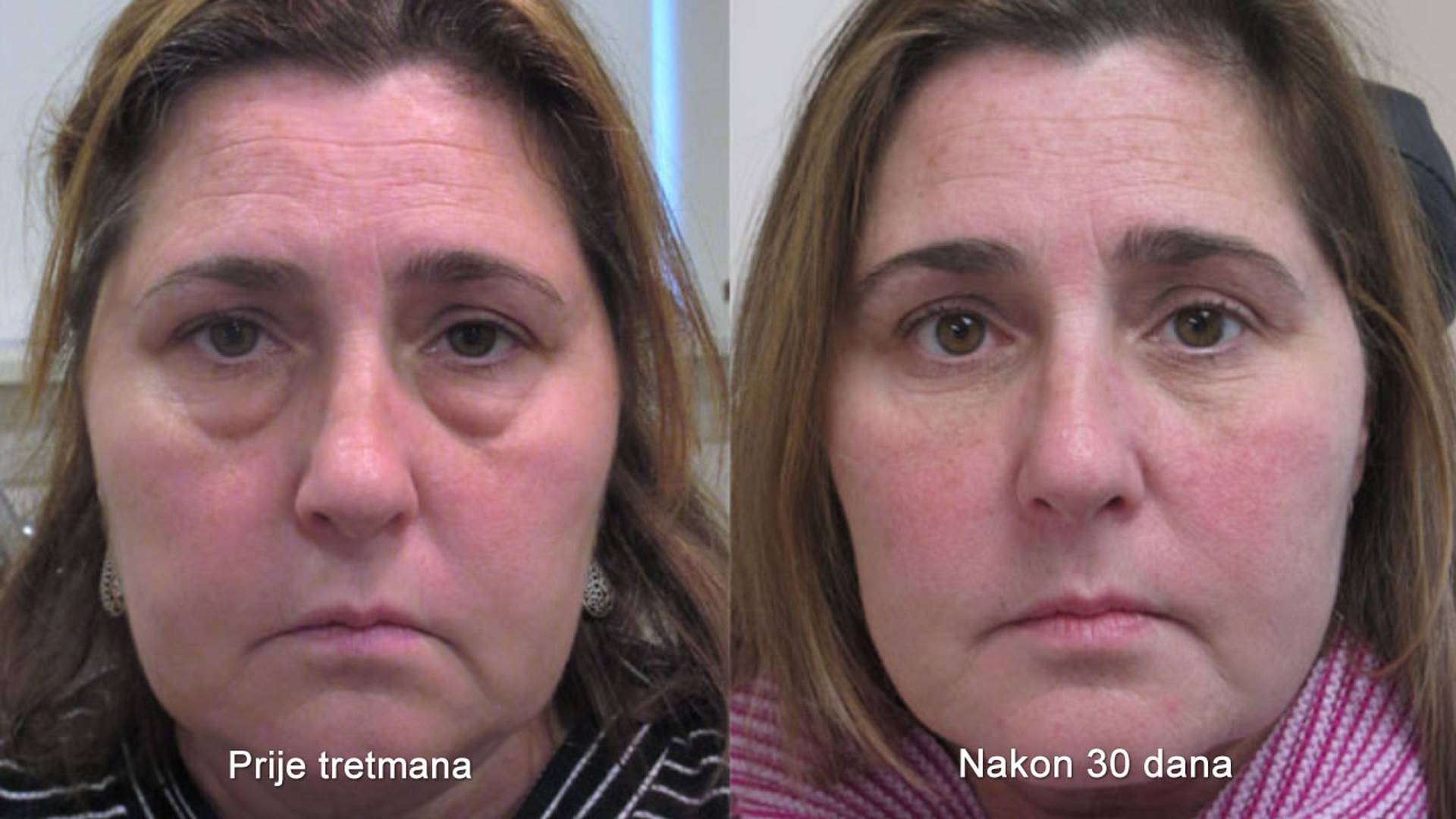
Medical Treatments for Persistent Eyelid Swelling
While many cases of swollen eyelids can be treated at home, some situations require medical intervention. Here are some common medical treatments for persistent eyelid swelling:
- Prescription antihistamine eye drops for severe allergic reactions
- Oral antibiotics for bacterial infections
- Topical ointments for certain types of eyelid inflammation
- In-office procedures to drain persistent chalazions
- Corticosteroid injections for severe inflammation
The appropriate treatment will depend on the underlying cause of the swelling. A healthcare professional can provide an accurate diagnosis and recommend the most effective treatment plan.
Treating Pink Eye (Conjunctivitis)
Pink eye, or conjunctivitis, is a common cause of eyelid swelling. How is this condition treated? The approach depends on whether the cause is bacterial, viral, or allergic. For bacterial conjunctivitis, antibiotic eye drops or ointments may be prescribed. Viral conjunctivitis often resolves on its own within 2-3 weeks, but artificial tears and cool compresses can provide relief. Allergic conjunctivitis can be treated with antihistamine eye drops or oral antihistamines.

When to Seek Immediate Medical Attention
While many cases of swollen eyelids are benign and can be treated at home, certain symptoms warrant immediate medical attention. These include:
- Severe pain in the eye
- Blurry or distorted vision
- Progressively worsening vision
- Appearance of floaters in your vision
- Sensation of something stuck inside the eye
- Inability to move the eye normally
- High fever accompanied by eyelid swelling
- Nausea, dizziness, or confusion along with eyelid swelling
These symptoms could indicate a more serious condition, such as orbital cellulitis or an eye emergency, which requires prompt medical intervention to prevent potential complications.
Understanding Orbital Cellulitis
Orbital cellulitis is a serious infection that affects the tissues around the eye. What makes this condition dangerous? Orbital cellulitis can spread quickly and, if left untreated, may lead to vision loss or even life-threatening complications. Symptoms include severe eye pain, fever, and difficulty moving the eye. This condition requires immediate medical attention and is typically treated with intravenous antibiotics.
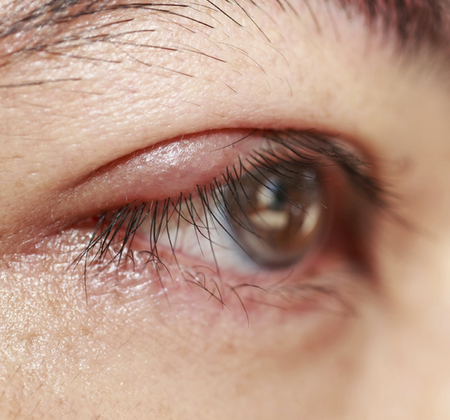
Prevention Strategies for Swollen Eyelids
While not all cases of swollen eyelids can be prevented, there are several strategies you can employ to reduce your risk:
- Practice good hygiene by washing your hands frequently and avoiding touching your eyes
- Remove eye makeup before going to bed
- Replace eye makeup regularly to prevent bacterial growth
- If you have allergies, try to identify and avoid triggers
- Use hypoallergenic cosmetics if you have sensitive skin
- Stay hydrated and maintain a balanced diet to reduce fluid retention
- Get adequate sleep to prevent eye strain and puffiness
By incorporating these preventive measures into your daily routine, you can significantly reduce the likelihood of developing swollen eyelids.
The Importance of Eye Hygiene
Maintaining proper eye hygiene is crucial in preventing eyelid swelling and other eye-related issues. How can you ensure good eye hygiene? Start by washing your hands thoroughly before touching your eyes or applying eye products. Clean your eyelids gently with a mild, tear-free baby shampoo or eyelid cleanser. If you wear contact lenses, follow proper cleaning and storage procedures. Additionally, avoid sharing eye makeup or towels with others to prevent the spread of infections.

Long-term Management of Recurring Eyelid Swelling
For individuals who experience frequent episodes of eyelid swelling, long-term management strategies may be necessary. These can include:
- Identifying and managing underlying conditions such as allergies or blepharitis
- Using artificial tears to keep eyes lubricated
- Implementing a daily eyelid hygiene routine
- Avoiding known triggers or irritants
- Regular check-ups with an eye care professional
- Considering allergy testing if allergies are suspected
By addressing the root causes and maintaining good eye health practices, many individuals can significantly reduce the frequency and severity of eyelid swelling episodes.
Managing Blepharitis
Blepharitis, an inflammation of the eyelids, can lead to recurring eyelid swelling. What are effective ways to manage this condition? Regular eyelid cleaning is crucial. Use warm compresses to loosen crust and oils, then gently clean the eyelids with a diluted baby shampoo solution. Over-the-counter lid scrubs or wipes can also be helpful. In some cases, your doctor may prescribe antibiotic ointments or oral antibiotics for more severe cases.
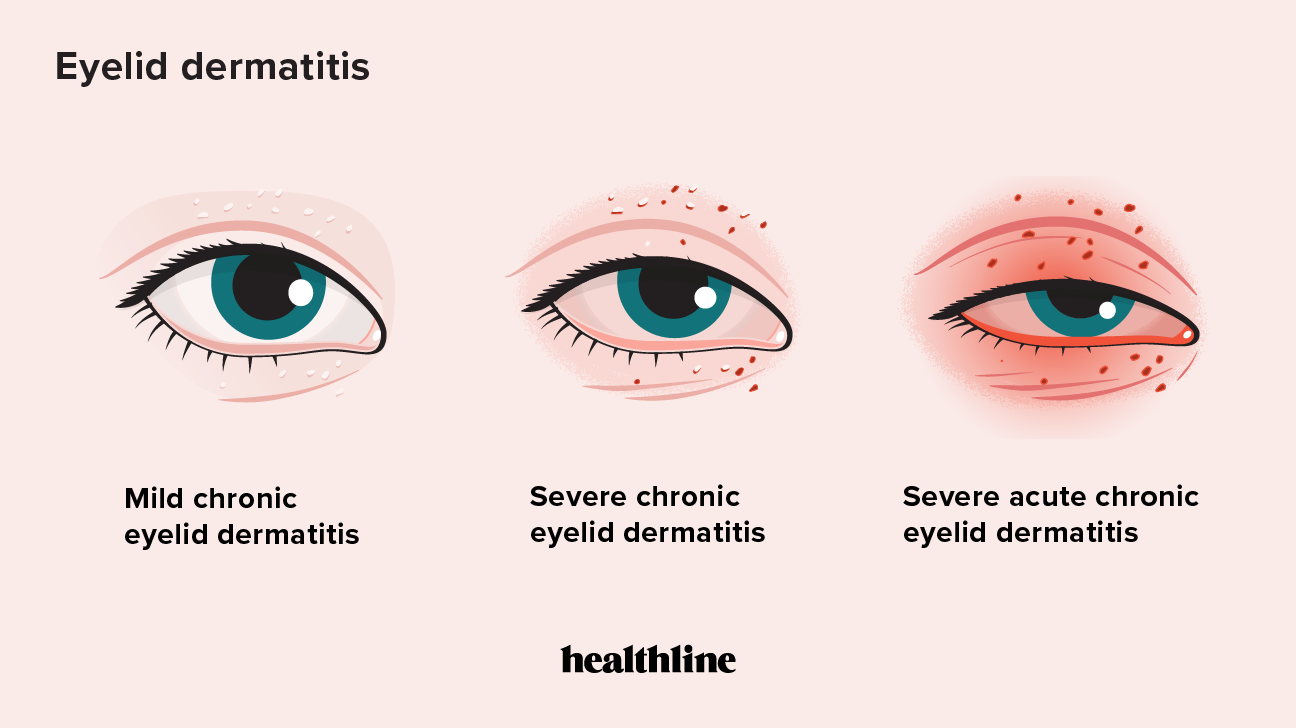
The Impact of Diet and Lifestyle on Eyelid Health
Your diet and lifestyle choices can significantly influence the health of your eyes, including the occurrence of eyelid swelling. Consider the following factors:
- Salt intake: Excessive sodium can lead to fluid retention, contributing to eye puffiness
- Hydration: Proper hydration helps flush out toxins and reduce swelling
- Alcohol consumption: Alcohol can cause dehydration, leading to puffy eyes
- Sleep position: Sleeping on your stomach can cause fluid to pool around your eyes
- Screen time: Excessive screen use can lead to eye strain and puffiness
- Smoking: Tobacco use can irritate the eyes and contribute to swelling
By making mindful choices in these areas, you can contribute to overall eye health and potentially reduce the likelihood of eyelid swelling.
The Role of Antioxidants in Eye Health
Antioxidants play a crucial role in maintaining eye health and potentially reducing inflammation that can lead to swollen eyelids. Which foods are rich in eye-healthy antioxidants? Leafy green vegetables like spinach and kale are excellent sources of lutein and zeaxanthin. Citrus fruits, berries, and bell peppers provide vitamin C. Nuts and seeds offer vitamin E. Including these foods in your diet can support overall eye health and may help prevent conditions that lead to eyelid swelling.
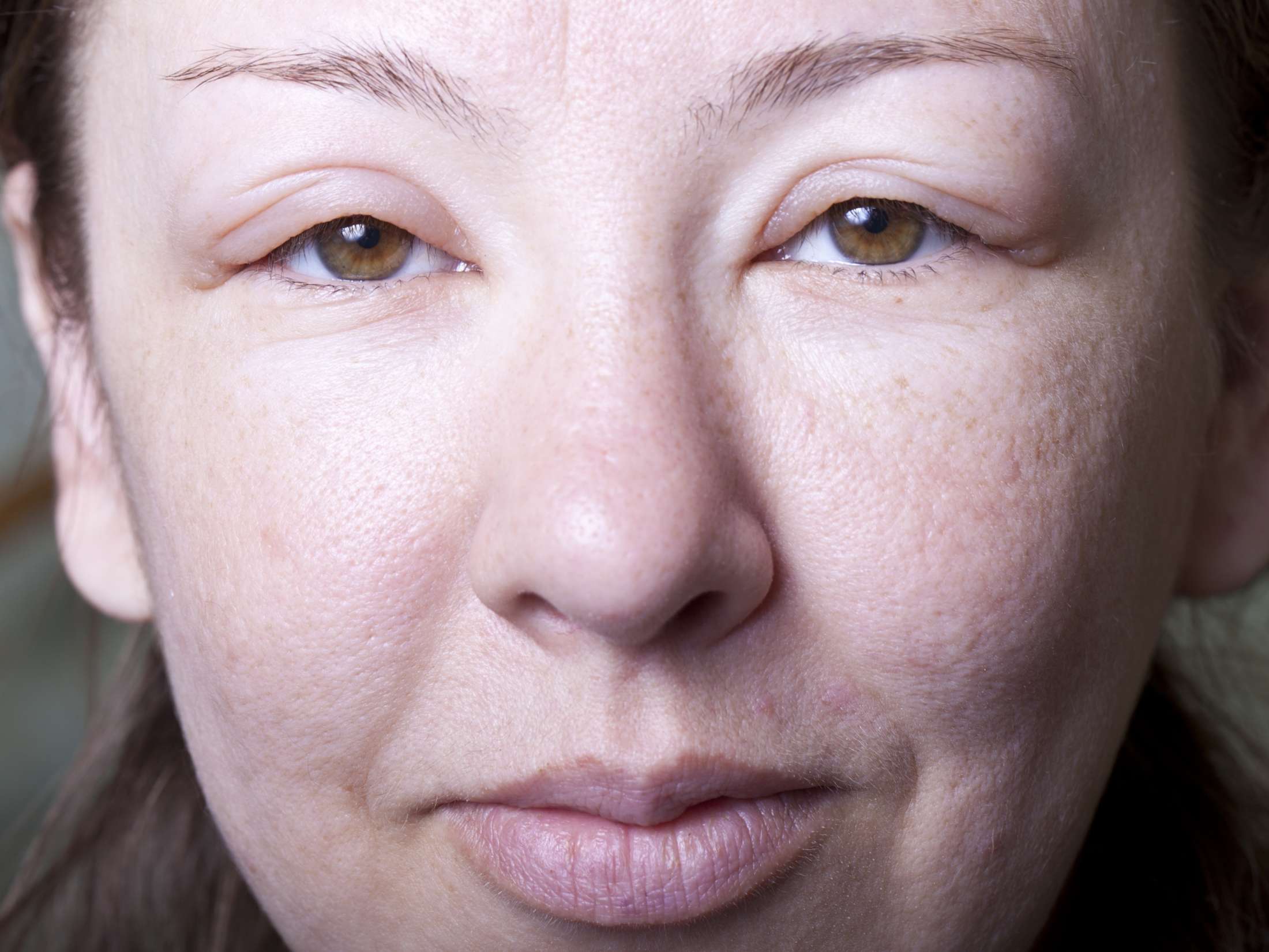
Understanding the Connection Between Systemic Diseases and Eyelid Swelling
While many cases of eyelid swelling are localized issues, sometimes they can be a symptom of a broader systemic condition. Some diseases that can manifest with eyelid swelling include:
- Graves’ disease (thyroid eye disease)
- Lupus
- Dermatomyositis
- Kidney disease
- Cardiovascular issues
- Certain types of cancer
If eyelid swelling is recurrent, accompanied by other symptoms, or doesn’t respond to typical treatments, it’s important to consult a healthcare provider. They can perform a thorough evaluation to rule out or identify any underlying systemic conditions.
Thyroid Eye Disease and Eyelid Swelling
Thyroid eye disease, often associated with Graves’ disease, can cause significant eyelid swelling and other eye-related symptoms. How does this condition affect the eyes? The autoimmune response in Graves’ disease can cause inflammation and swelling of the tissues around the eyes, leading to puffy eyelids, eye bulging, and in severe cases, vision changes. Treatment often involves managing the underlying thyroid condition and may include medications, radiation therapy, or surgery in advanced cases.

Understanding the various causes, treatments, and prevention strategies for swollen eyelids can help you manage this common condition effectively. Whether it’s a simple case of allergies or a symptom of a more serious underlying condition, being informed allows you to take appropriate action and seek medical attention when necessary. Remember, while many cases of eyelid swelling resolve on their own or with home remedies, persistent or severe swelling should always be evaluated by a healthcare professional to ensure proper treatment and prevent potential complications.
Swollen Eyelid: Causes, Treatment, and More
A cool compress or tea bag over your eye may help relieve swelling in your eyelid, while a saline rinse can help clear away crust and discharge. If the swelling doesn’t improve within a few days, a doctor can make a diagnosis and recommend treatment.
A swollen or puffy eyelid is common. In many cases, the swelling goes away within 1 day.
You can reduce the swelling with compresses, but how you treat a swollen eyelid also depends on its cause. Causes can range from fluid retention to a severe infection.
Several reasons your eyelid may be swollen include:
- allergies
- a bug bite
- fluid retention
- pink eye (conjunctivitis)
- a chalazion, which is a blocked oil gland that’s commonly referred to as a stye
- periorbital or orbital cellulitis, which is inflammation that spreads to the skin around your eyes
- trauma or injury, which is often accompanied by discoloration
- lack of sleep
Some medical conditions can also cause symptoms of a swollen eye or eyelid. They include Graves’ disease and — in rare cases — eye cancer.
They include Graves’ disease and — in rare cases — eye cancer.
To avoid complications, see an eye care professional if the swelling lasts longer than 24 to 48 hours.
You can treat swollen eyelids at home, especially if they’re a result of noninfectious causes such as fluid retention or allergies. If those are possible causes, then swelling will often occur in both eyes.
Tips for at-home relief
- Use a saline solution to rinse your eyes if there’s discharge.
- Use a cool compress over your eyes. This can simply be a cold washcloth.
- Remove contact lenses, if you have them.
- Place chilled black tea bags over your eyes. Caffeine helps reduce swelling.
- Elevate your head at night to decrease fluid retention.
- Try antihistamines if you have allergies.
Was this helpful?
If your puffy eyes are due to allergies, you can use antihistamine eye drops. For severe allergic reactions, you may need prescription eye drops.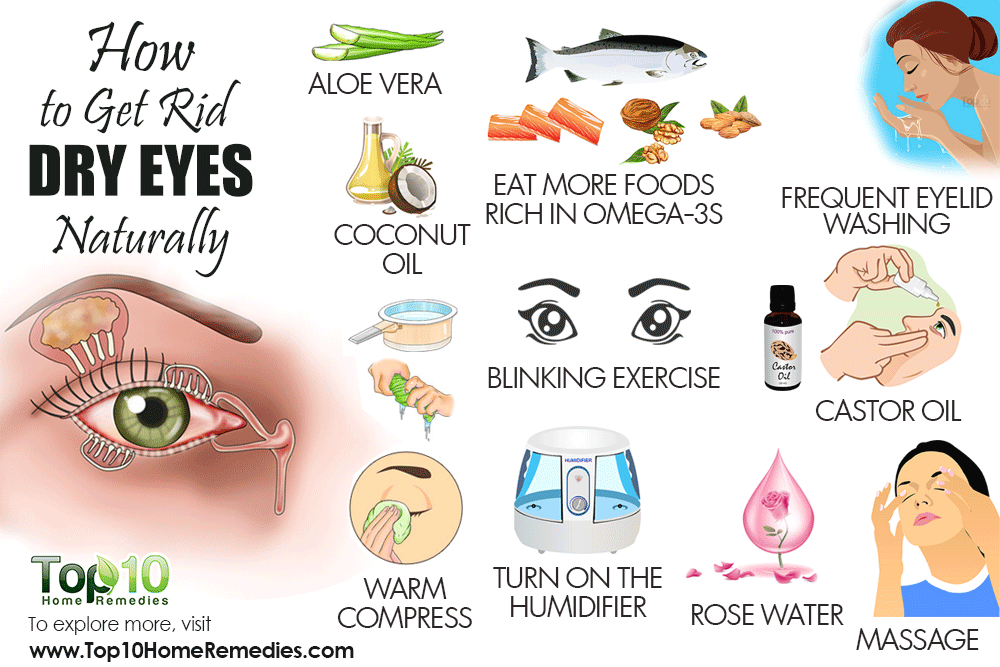 Oral antihistamines can also help.
Oral antihistamines can also help.
If your eyelids are painful or tender to the touch, the cause is likely an infection or chalazion (stye). It’s important to determine the cause of your swollen eyelid, as treatment options depend on what caused it.
Pink eye (conjunctivitis)
Pink eye is the result of a bacterial, viral, or allergic infection that causes inflammation on the surface of your eye. It can start from one eye and spread to both. Pus or a sticky coating will often appear visible on the eyelashes and in the corners of the eyes.
Treatment
You can clean the sticky and crusty eyelids with warm water and cotton. The eye may get better on its own without treatment, although it may take up to 2 to 3 weeks. During this time, avoid touching your eyes and keep your pillowcases clean.
You’ll also want to stop using eye cosmetics and contact lenses.
Chalazion (stye)
If your upper or lower eyelid is swollen, it could be from a chalazion (stye). A chalazion typically causes a tender bump in the eyelid with localized swelling around the blocked gland. It may become red or inflamed.
A chalazion typically causes a tender bump in the eyelid with localized swelling around the blocked gland. It may become red or inflamed.
It can take a few weeks to clear, and some develop into a hard bump.
Treatment
You can use a warm compress to bring relief and promote healing. The warmth can help with oil secretion and blockage. You can do this three to five times a day.
On occasion, a doctor may recommend prescription eye drops or ointments. If the chalazion continues to linger, the doctor can perform an in-office procedure to drain it.
Avoid using makeup while you have a chalazion.
What to do if it’s an infection
An infection of the skin is called cellulitis. In periorbital or orbital cellulitis, the skin around your eye will become red and may hurt. You’ll need antibiotics to relieve this swelling.
Cellulitis symptoms that indicate the need for emergency treatment include:
- high temperature
- nausea
- dizziness
- shaking
- confusion
- vision changes or double vision
- inability to move your eye normally
Depending on the cause, swollen eyelids take anywhere from a few days to several weeks to clear up.
Be sure to stay indoors when you can if allergies are the cause. If your swollen eyelids are due to crying, try to wash your face before you go to bed.
Some people prefer to seek medical treatment immediately so they can get an accurate diagnosis and, if necessary, antibiotics. Always see a doctor if your bump or swelling does not start to improve after 1 week or if the swelling is worsening.
Emergency symptoms
See a doctor immediately if your swollen eyelids are accompanied by these symptoms:
- pain in your eye
- blurry or distorted vision
- vision that gets worse
- floaters in your vision
- feeling that something is stuck inside your eye
- inability to move your eye normally
Certain conditions that cause a swollen eyelid require medical attention. Cancers of the eye are rare, but they may cause the eye to push forward, making it seem like the eyelid is swollen when it‘s actually pressure from the cancer.
Other symptoms to watch out for
Only a doctor can diagnose what’s causing your eyelid to swell. However, it may help if you can note:
However, it may help if you can note:
- any difference between the symptoms that came before and the symptoms that came after the swelling
- when pain is present and when pain is absent
- whether you have an identifiable lump versus general swelling
- vision changes, especially double vision
13 Remedies for Puffy, Red, Dry Eyes
If your eyes are red and puffy, cooling and hydrating the area can help. Easy at-home methods include tea bags, a facial roller, or a cool washcloth.
Whether you’re going through a tough breakup or have another difficult situation that’s bringing you down, crying is a part of life. It’s an emotional response that appears to be unique to humans. It may have even developed to help with survival.
Still, the puffy, red eyes you get after a crying session don’t have to bring your mood down any further. Keep reading to learn how you can quickly ease your symptoms using things you may already have around your home.
You might associate tears with major moments of sadness or joy. While tears help us process our emotions, it turns out they do a lot more than that, too.
There are three types of tears:
- Basal tears keep your eyes lubricated and protected at all times.
- Reflex tears show up quickly and in large quantities to wash away irritants, like when you’re cutting an onion. They may even have extra infection-fighting powers.
- Emotional tears happen in response to strong feelings, like overwhelming happiness or sadness.
Emotional tears, like the ones that happen when you cry, may have evolved to help us relate to one another. For example, tears could act as a signal that someone needs help. They may also contain hormones that are involved with stress relief.
While researchers are still working to understand why we cry, there are plenty of ways to soothe your eyes when it happens.
When you cry, fluid gathers under the eyelids and around the eye area. Reducing the swelling is all about cooling and moving the fluid away from the eyes.
Reducing the swelling is all about cooling and moving the fluid away from the eyes.
1. Apply a cool compress
A cool compress can help reduce swelling. Simply grab a clean washcloth and wet it with cool water. Sit up in bed or in a comfortable chair. Hold the cool washcloth to the skin under and around your eyes for a few minutes.
If you’re using a frozen cold compress, make sure to wrap it in a clean, dry towel. Never apply ice directly to your skin.
2. Apply cucumber slices or tea bags
Cucumber slices can also help soothe puffy eyes and reduce swelling. Take a cucumber from your fridge, give it a wash, and cut off two 1/4-inch slices. You can save the rest of the cucumber for snacking. Lie back and keep the slices on your eyelids until they’re no longer cool.
Tea bags combine a cool compress with de-puffing caffeine. Most varieties of black, green, and white tea contain caffeine. There’s some evidence that it can penetrate the skin, reduce swelling, and increase circulation.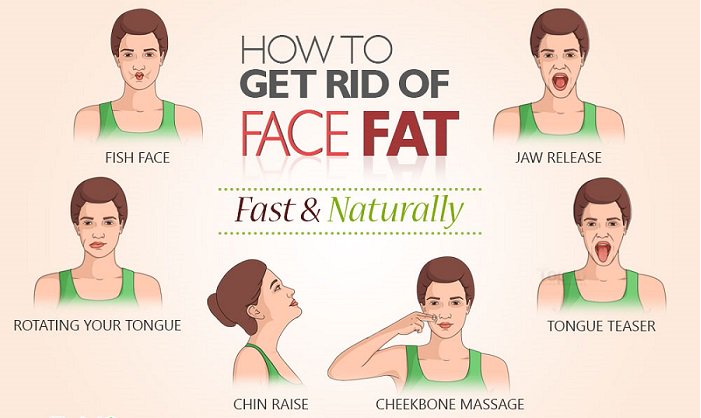
To try this method, wet two tea bags, refrigerate them for 20 minutes, and then place them on your eyes for 15 to 30 minutes.
3. Gently tap or massage the area to stimulate blood flow
You can work to increase blood flow to the affected area by gently tapping or massaging around your eyes. The pressure from your fingers may help move fluid away.
Use the soft pads of your fingertips to make tapping or sweeping motions around the contours above and below your eyes. The skin in your eye area is delicate, so be extra gentle and avoid dragging or pulling. You can try using a gentle eye cream to help your fingers glide over your skin.
You can try this for several minutes. But if you notice any pain or irritation, stop right away.
4. Apply witch hazel
You may have witch hazel hanging around in your medicine cabinet. This astringent can help with inflammation and redness, making it a good choice to treat puffiness. But it’s best to avoid getting the liquid directly in your sensitive eye area.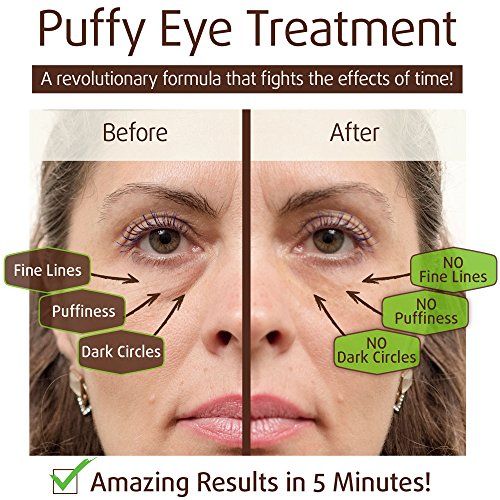
To use, lightly wet a cotton pad — you do not want it to drip — then press the pad gently onto your upper cheek, away from the lower eyelid.
Take a second to read the product label first to check if it’s safe to use near your eyes.
5. Use a facial massage tool
Items like facial rollers and gua sha tools can help you massage your skin. They’re often used with a facial oil or serum to glide over your face.
Some say they can help with circulation or help your skin care product absorb. And tools that feel cool to the touch might help with puffiness.
If you happen to have a roll-on eye serum in your skin care stash, now might be a good time to give it a try. The cool metal ball can feel soothing when it’s swept over your undereye area.
Always use a light touch when applying a massage tool to your eye area, and stop if you notice pain or irritation.
6. Apply a chilled cream or serum
Again, cooling down the eye area can help reduce puffiness. Try chilling your favorite face cream or other products, such as eye cream, before applying. But remember, keep products that are not eye-safe away from your direct eye area.
Try chilling your favorite face cream or other products, such as eye cream, before applying. But remember, keep products that are not eye-safe away from your direct eye area.
The redness you experience after a good cry comes from the blood vessels in your eyes. Constricting the vessels and adding soothing moisture to your eye can help ease the redness. You can also use makeup to create a similar effect.
7. Use eye drops
Eye drops can be used to help with dryness and irritation. Other varieties are intended to reduce redness that you experience with crying or allergies.
To avoid causing more irritation, use eye drops only as directed on the label. Using them too often can make your symptoms worse.
Also, many formulas are not recommended for people who wear contact lenses. Read labels carefully and be prepared to take out your lenses before using eye drops.
8. Add some eyeliner
If your eyes are not too sore for eyeliner, you can try adding some to enhance the whites of your eyes.
A “tightline” is a technique that’s similar to tracing the waterline. It’s sometimes called “invisible eyeliner” because it simulates the natural area of darkness in your lash line.
Gently wiggle your liner of choice along your upper lash line. You may need to do a “dot-dash” to get the whole way across, and then softly blend the line.
This look can help your eyes appear brighter. But consider keeping makeup away from your lashes and waterline if your eyes are feeling extra irritated.
9. Apply color-correcting concealer
The skin under your eyes can look darker after crying. You may also have redness around your nose or other spots on your face. A good concealer can help mask these telltale signs and give you a refreshed look.
You can also consider using a green concealer to help neutralize redness. Green is the opposite of red on the color wheel, leading the two colors to cancel out. You can apply concealer to affected areas and blend well using your fingers, a brush, or a sponge.:max_bytes(150000):strip_icc()/stages-of-a-cold-sore-outbreak-4173005-5c1a8ad0c9e77c0001e31b0e.png)
10. Enhance with color elsewhere
Adding color to other areas of your face may distract from redness around your eyes and nose. For example, you can apply blush to your cheeks and add your favorite lip color.
This can help you to look livelier and draw attention to other parts of your face.
Along with puffiness and redness, your eyes may feel dry after crying. Not only that, but your whole face — especially the skin under and around your eyes — may also feel dry. Rehydrating your body and your skin should help bring back moisture.
11. Drink water
Grab a tall glass of water and keep drinking. Water infuses your whole body with hydration. Although you may have heard that you should drink eight glasses of water per day, the Centers for Disease Control and Prevention (CDC) says there’s no exact recommended amount for U.S. adults today.
The amount of water you need depends on your age and other health factors. You can also get some of your hydration from other foods and drinks you consume. But as the CDC explains, drinking water is a great way to protect your health.
But as the CDC explains, drinking water is a great way to protect your health.
If you don’t like plain water, you might try squeezing in a bit of lemon. You can also use slices of cucumber or your favorite fruit to flavor your water.
12. Cleanse your skin
Although tears are not bad for your skin, over time, they have the potential to cause dryness. Rinsing them away with cold water can help. Use a soft towel to gently pat your skin dry.
When needed, you can also use a face wash. The American Academy of Dermatology (AAD) recommends using an alcohol-free cleanser that is free from physical exfoliants.
But keep in mind that washing your face more than twice per day may actually make dryness and other skin problems worse in the long run.
13. Apply a moisturizer
Your skin may feel dry and itchy after crying. To help your skin recover, the AAD says that this is the right time to reach for your moisturizer.
Once you’ve finished cleansing your skin, apply a moisturizer right away. Doing so will help further lock in moisture. Read the product label before getting any products too close to the direct eye area, and be extra gentle when touching the skin around your eyes.
Doing so will help further lock in moisture. Read the product label before getting any products too close to the direct eye area, and be extra gentle when touching the skin around your eyes.
These methods should help ease your symptoms after a good cry. They may help you feel a bit better, too. Caring for yourself is important in times of sadness or stress. Take time for self-care each day, even if it’s only for a few minutes.
Better yet, talk out your thoughts or just unwind with a trusted friend or family member. A licensed therapist is another good option.
If you’re feeling concerned about how you’re coping, talk with a doctor. They can help connect you with resources or diagnose any underlying conditions that could be affecting your mood. Just remember that you don’t have to go through whatever you’re facing alone.
reasons, how to remove puffiness, the best remedies
Swelling under the eyes can be caused by a variety of reasons from banal lack of sleep to serious diseases. Let’s figure out what’s the matter and how to eliminate ugly swelling in the eye area in order to get rid of edema quickly and effectively.
Let’s figure out what’s the matter and how to eliminate ugly swelling in the eye area in order to get rid of edema quickly and effectively.
Tags:
beauty
Skin care
recipes
Diseases
Cosmetics
Some people deal with them all their lives, some took a month to get rid of them forever. Swollen eyelids and puffiness under the eyes torment almost everyone. Want to remove the “heavy” look? First establish the cause, and only then begin treatment. We tell in detail what to do with puffiness and what causes it.
Contents of the article
Edema under the eyes is a common phenomenon that everyone has encountered at least once in their life. Why puffiness occurs, does it always signal serious problems, how to prevent the appearance of bags under the eyes and quickly remove them if they do arise – we tell in our material.
Puffy eyes after sleep: causes and solutions
ADVERTISING – CONTINUED BELOW
Waking up and seeing severely swollen eyelids is not the most pleasant start to the day. However, do not worry, most likely, you can quickly get rid of circles if it is not a disease and not heredity. Edema can appear for a variety of reasons. Let’s figure out what causes puffiness in the morning, and how to get rid of swelling under the eyes in these cases.
However, do not worry, most likely, you can quickly get rid of circles if it is not a disease and not heredity. Edema can appear for a variety of reasons. Let’s figure out what causes puffiness in the morning, and how to get rid of swelling under the eyes in these cases.
Dinner too salty
One of the most common causes of swollen eyelids in the morning is excessive salt intake the day before. A large amount of salt in the body leads to the accumulation of excess fluid. Including water is collected in the area of the eyelids. Hence the severe swelling under the eyes after sleep.
Solution – You don’t have to cut out salt completely, just reduce your daily intake and don’t go salty in the evenings. Improvement will not take long. Additionally, drink more water to flush out most of the salt from the body.
Drinking a lot of alcohol
Wild cocktail parties cause more than just hangovers. Why can puffiness under the eyes appear the next morning after heavy drinking? Alcohol leads the body to dehydration, which causes puffiness and swollen eyelids. Alcoholic drinks also expand the blood vessels, in which excess fluid accumulates.
Alcoholic drinks also expand the blood vessels, in which excess fluid accumulates.
Solution – Drink plenty of water before going to bed after a party. And don’t forget to wash off your makeup and apply an eye cream with green tea or aloe vera extract.
Minor eye injuries like scratches
Stop rubbing your eyes and touching them with your hands. Such actions injure the delicate skin around the eyes, provoke swelling of the eyelids, and bags may also appear under the eyes.
Solution – If you need to remove dirt or anything, use soft, clean wipes. If the skin is already swollen, apply a cooling mask around the eyes and make a few cold milk compresses before bed and in the morning to soothe the skin.
You are regularly exposed to stress, lack of sleep
Even mild stress increases cortisol levels and changes the salt balance in the body. The result is swelling under the eyes in the morning. This item is especially relevant for those who suffer from insomnia and sleep critically.
This item is especially relevant for those who suffer from insomnia and sleep critically.
Solution – Relieve stress with exercise, relaxation treatments, or regular restful sleep. Additionally moisturize the skin around the eyes with cucumber cream, which reduces circles and puffiness. The best treatment for puffy eyes after stress is a good vacation, or at least a quality weekend getaway.
Read also: Meditation for beginners: how to get rid of headaches and reduce stress
Other causes of swelling under the eyes
We have studied the main causes that cause morning puffiness. Now we will tell you why, in principle, swelling occurs under the eyes.
Changes in temperature
Do you constantly relax, take care of your skin, but in a different climate your eyelids still swell up? It’s simple – the causes of swelling under the eyes of the eyes in women can be associated with changes in temperature. For example, in hot countries with high temperatures, the eyes dry more than usual. Due to the overdried mucous membrane, the skin around the eyes thickens and becomes irritated.
For example, in hot countries with high temperatures, the eyes dry more than usual. Due to the overdried mucous membrane, the skin around the eyes thickens and becomes irritated.
Sensitive skin
Delicate and “fragile” dermis always react negatively to aggressive chemicals and certain temperatures. Thin skin is quickly irritated and begins to swell. To reduce symptoms, you need to select special care products from pharmacy collections and wash your face only with slightly cool water – not cold and not hot.
Aging
Whether it’s chrono-aging or the deterioration of the skin due to sun exposure, in any case, the skin around the eyes becomes less firm and smooth, it lacks collagen. In addition, metabolism slows down with age, which can lead to water retention in the body.
Time cannot be stopped, but its influence can be slowed down. To increase your collagen content, use laser skin tightening treatments and buy skin care products with retinol, vitamin C and collagen in the composition. Professional treatments and proper care will make the skin around the eyes firmer and smoother. Creams for puffiness under the eyes will also not be superfluous. Also use sunscreen and avoid products with sodium.
Professional treatments and proper care will make the skin around the eyes firmer and smoother. Creams for puffiness under the eyes will also not be superfluous. Also use sunscreen and avoid products with sodium.
Read also: The skin ages quickly because of these eating habits: alas, you have them
Heredity
Unfortunately, heredity is one of the reasons why the area under the eyes swells. Edema may be part of the genetic code. If for many years you have been unsuccessfully struggling with swollen eyelids and swelling under the eyes, it is probably a matter of heredity. And there’s nothing you can do about it.
Poor care of contact lenses
Are you a contact lens wearer and notice that the area under your eyes is swollen? Check if everything is in order with contact lenses. Perhaps it’s time to change them or you should wear them less often, combining them with glasses. Dirt or a scratch on the lens will increase eye strain and cause swelling.
Prolonged crying
Tears that form during crying contain more water than the tears that the eyes secrete for self-cleansing and moisturizing. Salt levels are elevated in the tissues of the eyes, so that when tears come into contact with a salty environment, the skin swells. How to remove swelling under the eyes after crying? The best way to deal with them is with cold compresses. The main thing is not three eyes.
Love for salty and sweet
Salt and sodium in large quantities retain fluid in the body, which leads to swelling. Reduce the amount of salt to reduce circles and puffiness under the eyes. By the way, excess carbohydrates can also cause puffiness.
Menstruation
Swelling under the eyes can be caused not only by lack of sleep or heredity. The causes of puffiness in women are also associated with the menstrual cycle. During menstruation, the body experiences stress and retains water in the body. Hence – a couple of extra pounds, puffiness of the body and swelling under the eyes.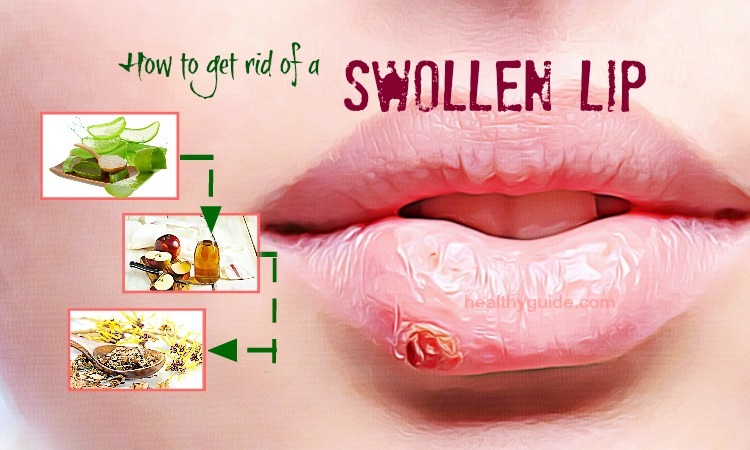 The treatment of swelling under the eyes in women before and during critical days consists in active care for the skin of the eyelids. Restricting salt can help too.
The treatment of swelling under the eyes in women before and during critical days consists in active care for the skin of the eyelids. Restricting salt can help too.
Bruises and swelling under the eyes: when to see a doctor
Puffiness is not always caused by harmless causes, sometimes puffiness under the eyes is a symptom of serious diseases. If the swelling is accompanied by pain and worsens every hour, contact your doctor as soon as possible. All other cases are not so dangerous, however, if home remedies do not help get rid of swelling, do not delay a visit to the doctor.
What diseases can puffiness under the eyes indicate?
- Eye injury. For her, sometimes a careless movement is enough. Focus on the condition of the eye – if there is pain or visual impairment, then urgently see a doctor.
- Conjunctivitis. Along with swelling and redness of the eyes, conjunctivitis causes itching, discharge, and a fear of bright light. If all the symptoms match, consult a doctor to identify the specific cause and treat swelling under the eyes.

- Allergic reaction. Allergies are activated when the body’s immune system reacts to any foreign substance, such as pollen or dust. If within a few days the symptoms do not decrease, be sure to consult a doctor. With severe swelling under the eyes, it is better not to postpone the consultation.
- Diseases of the kidneys. If bags regularly appear under the eyes, then there is a possibility that the cause of swelling under the eyes is the kidneys. Thus, various diseases can manifest themselves from chronic renal failure to acute nephritis, the doctor will make an accurate diagnosis and prescribe treatment.
- Diseases of the heart. Puffiness and dark circles under the eyes can signal cardiovascular diseases and blood circulation disorders.
- Endocrine diseases. Malfunctions in the thyroid gland can cause swelling, including under the eyes. Contact an endocrinologist to rule out this cause.
How to quickly remove swelling under the eyes: express methods
Morning sleep deprivation or condition after a hot party? We share methods on how to remove swelling under the eyes.
General recommendations to help eliminate swelling of the eyelids, eyes and under the eyes:
- Practice breathing exercises. Breathe slowly and deeply for at least 10 minutes a day.
- Reduce your alcohol intake.
- Reduce your intake of salt and sodium-rich foods.
- Drink plenty of water.
- Sleep well.
- Sleep with multiple pillows to prevent fluid buildup around the eyes.
- Eat foods high in potassium.
Apply ice cube or cold spoon
No cooling masks? Not scary. Put two clean teaspoons in a bag in the freezer for several hours. In the morning, apply chilled spoons to the area around the eyes for several minutes. Another similar way to quickly remove swelling under the eyes is to apply ice cubes. But remember, it is better to make ice from filtered purified water.
Take a tea bag
We continue the parade of home anti-edema methods. Next in line are tea bags with green or black tea. How to remove swelling and bruising under the eyes with their help? Pre-brew them in hot water for a minute and let cool to room temperature. Then put them under your eyes for 3 minutes. The natural caffeine in tea will constrict blood vessels and reduce swelling.
How to remove swelling and bruising under the eyes with their help? Pre-brew them in hot water for a minute and let cool to room temperature. Then put them under your eyes for 3 minutes. The natural caffeine in tea will constrict blood vessels and reduce swelling.
Gentle massage
What should I do if my eyes are swollen and bags under my eyes have not gone away for a long time? Start your treatment with a gentle massage. Light tapping with your fingertips on the delicate skin of the eyelids and lacrimal sacs will disperse excess fluid and reduce swelling. Move your fingers from the inside of the lower eyelid to the upper. Gentle stroking movements from the nose to the outside of the eye also help a lot.
Read also: How to get rid of wrinkles around the eyes with massage: an honest VOICE experiment The device combines all the important components: an ice metal ball for cooling, caffeinated serum and massage movements to remove excess fluid. The method successfully helps to eliminate dark circles under the eyes and swelling.
Try Eye Mask
Don’t know how to quickly remove swelling from the eyes? Use a homemade or store-bought cooling mask for the skin around the eyes. The powerful composition of professional care products reduces swelling, soothes and moisturizes the skin. And don’t forget that eye masks are best stored in the refrigerator.
Apply Aloe Vera
Cold Aloe Vera Gel is another easy way to soothe skin and reduce under eye circles and puffiness at home. Thanks to its anti-inflammatory properties, aloe gently smoothes the skin texture.
Moisturize the area around the eyes
How to remove swelling, bags under the eyes? In this case, your main allies are eye cream and chilled cucumber slices. First, put the vegetable circles on your eyes for a few minutes, and then apply the cream with patting movements.
Use eye drops
If you often sit at the computer, regularly moisten your eyes with special drops. Otherwise, the overdried mucous membrane will become inflamed and swell. Do not forget about regular moisturizing of the mucosa, and you will forget how puffiness looks like under the eyes.
Otherwise, the overdried mucous membrane will become inflamed and swell. Do not forget about regular moisturizing of the mucosa, and you will forget how puffiness looks like under the eyes.
The best remedies for puffy eyes: masks, ointments and patches
What to do with puffy eyes, and which skin care products work best – we share recommendations for choosing and specific products.
Eye masks
Masks are ideal for sensitive and dry skin under the eyes, which often lacks moisture and beneficial ingredients. Make masks to get rid of puffiness and for prevention. Judging by the reviews, swelling under the eyes disappears after the first application of masks, but regular moisturizing will be even more effective.
How to properly use an eye mask?
Read the instructions – some eye masks work only as part of a night care, other products need to be washed off after 5-20 minutes. Each skin care product works differently, but there are some general guidelines to keep in mind:
Cleanse your skin before using the eye mask to help the product penetrate deeper.

Do eye masks in the morning to improve your skin throughout the day.
If you can leave the mask in the refrigerator, be sure to do so. Cold is the best remedy for swelling under the eyes.
Hydra-Essentiel Eye Mask by Clarins. Botanical ingredients like Kalanchoe, Algae and Chestnut instantly refresh and hydrate tired eyes. In just 10 minutes, the cooling effect smoothes the skin and reduces puffiness under the eyes after sleep.
Guinot Masque Yeux Hydrating Mask. Guinot 10 Minute Hydrating Eye Mask works wonders to instantly smooth fine lines and wrinkles, reduce dark circles and puffiness under the eyes.
Swelling of the face under the eyes – a recipe for an effective home mask. But you can save on the mask and make a homemade version that will work just as well and remove dark puffiness under the eyes.
Ingredients:
- cosmetic rose water;
- fresh cucumber.

How to cook:
Grate half a cucumber and squeeze out the juice.
Add two drops of rose water to cucumber juice.
Take a cotton pad and soak it with the resulting mixture.
Wash off the mask with water after 15 minutes. Apply eye cream.
Sunscreen
The harmful effects of the sun is one of the reasons why it swells under the eyes and early wrinkles appear. Even 10 minutes of exposure to the sun a day can lead to serious problems. Of course, sunscreen will not instantly get rid of puffiness, but its regular use will help improve the condition of the skin in general and around the eyes in particular.
When choosing a sunscreen, bet on products with a mineral composition. Mineral sunscreens are a great option for people with sensitive, acne-prone and rosacea-affected skin. Dermatologists recommend regularly applying creams with SPF 30 or higher to prevent puffiness under the eyes and other signs of aging.
Neutrogena Ultra Sheer Sunscreen SPF 55. If you’re looking for an affordable mineral SPF cream, look no further than Neutrogena. The American brand offers a wide range of sunscreens for different skin types. Sunscreen for Sensitive Skin is a thin, lightweight formula that is hypoallergenic, fragrance-free and oil-free. Also, the remedy does not cause acne and is not felt at all under makeup, which is rare in itself.
La Roche-Posay Anthelios Ultra Sunscreen SPF 50. Cream combines sunscreens and antioxidants. The technology protects the skin from free radicals, which cause photoaging. This product has a light, liquid, serum-like consistency that almost dissolves on the skin.
SkinMedica Essential Defense Sunscreen. It is free of comedogenic ingredients, parabens, oils and fragrances. The product is suitable for people with sensitive skin or for those who are recovering from aggressive cosmetic procedures, it will prevent the early appearance of wrinkles and puffiness under the eyes.
Eye Puffiness Patches
Small stickers soaked in care serum relieve puffiness under the eyes, but work without a cumulative effect. If there is no time for masks, just stick on cooled patches for puffiness and bags under the eyes. The main thing is not to overexpose them so as not to dry the skin.
Benefiance WrinkleResist24 Patches by Shiseido. Elastic patches are infused with retinol, so they not only fight eyelid puffiness, but also reduce fine lines around the eyes. The manufacturer also promises that the patches will work on the nasolabial folds.
Milk Makeup Cooling Water Patches. One of the best under eye patches for puffiness, redness and fine lines. The composition includes sea water and lavender, which soothe the area around the eyes, and caffeine, which tones the skin and removes excess water.
FlashPatch patches from Patchology. Contains moisturizing ingredients, tonic caffeine and botanical extracts to brighten the eye area and combat mild puffiness.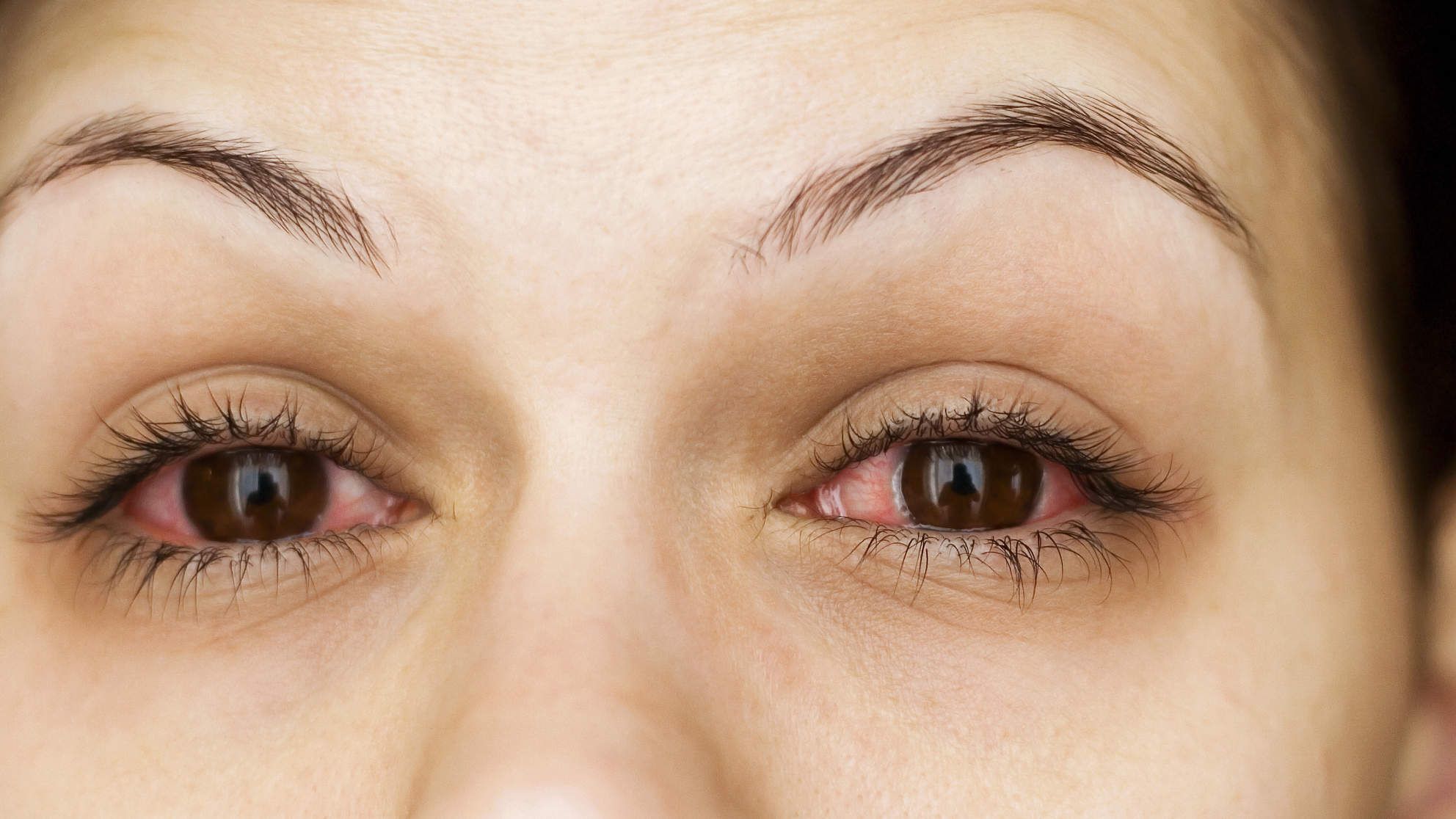
Read also: Hydrogel patches: the best way to look stunning
Ointment for puffiness under the eyes prescription. Before starting treatment for swelling under the eyes in women with the help of such means, it is recommended to consult a doctor.
Troxevasin. Medical product strengthens blood vessels and improves blood circulation. Troxevasin should be applied no more than twice a day for two weeks. Be careful and make sure that the ointment does not touch the eye itself.
Heparin ointment. Heparin thins the blood and dilates blood vessels, which visually reduces puffiness around the eyes. Key components of the ointment like peach oil and petroleum jelly moisturize the skin. Heparin ointment for swelling under the eyes is a proven and reliable remedy. It should be used no more than twice a day for 3-4 weeks to significantly reduce swelling and circles. Before starting the course, read the contraindications.
Blefarogel. Eye puffiness ointment controls the amount of fluid and removes its excess. The product contains aloe vera and hyaluronic acid, which in itself is beneficial for the skin. Regularly apply blefarogel with massage movements no more than twice a day until the swelling disappears completely. The first results should be expected in a month.
Some people think that patches should not be used too often, but this is not the case. They can be used every day if necessary. In any case, they work without a cumulative effect. For serious regular care, choose a specially selected eye cream that will relieve puffiness, reduce circles and fine wrinkles. The eye cream can be combined with an SPF care cream, which is necessary to prevent photoaging.
Edema under the eyes in the morning: video instruction on how to remove them in 5 minutes
youtube
Click and watch
Photo: Shutterstock
How to remove swelling from the eyes after tears.
 Effective help
Effective help
Contents:
➦What are the main causes of puffy eyes and panda effect?
➦ Why do my eyes swell when I wake up?
➦Quick relief from puffiness under the eyes
➦Professional and drugstore products
➦Unable to remove puffiness? Hide her!
➦Does puffy eyes mean I have some kind of disease?
➦How to treat eyes with puffiness
➦The main thing is not to be discouraged, puffiness will definitely pass!
Our sympathetic nervous system reacts quite quickly to excessive stress. In an effort to protect us from the pathogen and perform an emotional reset in response to any strong adrenaline rush, it irritates the tear ducts inside the eye. An irritated canal provokes a copious release of tears, as well as redness of the face and swelling. Gradually, the heart rate returns to normal, the level of adrenaline decreases, but the puffiness from the eyes does not go away so easily. It turns out that swelling is caused by excessive tension of the channel, and you yourself provoke it by trying to wipe your eyes from tears with your hands or any other means at hand.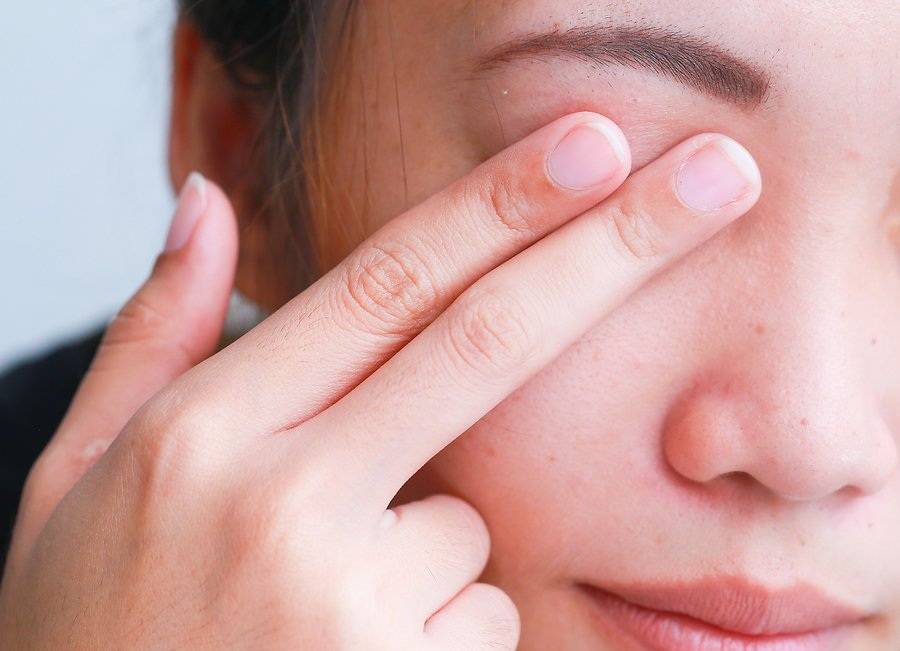
What are the main causes of puffy eyes and panda effect?
Tears are not the main cause of puffy eyes, but they provoke an excessive accumulation of fluid in the tissues of the skin. Since the skin around the eyes is very thin, when they swell, they form swellings that become visually noticeable. But why does fluid accumulate at all, forming a swelling of the eye?
Swollen eyes usually result from a variety of factors, including:
✦ Fluid retention
✦ Hay fever allergic reaction
✦ Sinus problems and runny nose
✦ Dehydration
✦ Tiredness and lack of sleep
✦ Stress
✦ Lots of tears
✦ Aging
✦ Inherited facial features
Unfortunately, many people suffer from puffiness around the eyes due to hereditary factors that are inherent in their face type. Swelling under the eyes can be the result of age-related changes in adipose tissue. It is usually located around the bony part of the orbit and protects the eyeball from damage. With age, it begins to move forward and fill the spaces under the eye. These changes can only be stopped surgically or by a cosmetologist using special injections.
With age, it begins to move forward and fill the spaces under the eye. These changes can only be stopped surgically or by a cosmetologist using special injections.
This process is almost inevitable, but at a certain age you can influence it with the help of cosmetics and procedures. It occurs due to tissue aging and thinning of the membranes that hold fatty deposits that accumulate on the upper and lower eyelids. As the membrane becomes thinner, the fat expands and moves forward. This causes puffy eyes, dark circles and bags under the eyes.
Why do my eyes swell when I wake up?
For some, this fact may be surprising, but during sleep we do not blink. Our eyes are tightly closed and under the eyelids there is a chaotic movement of the eyeball. Unfortunately, some people may develop puffy eyes after prolonged sleep. The process of blinking is very similar to walking or playing sports. When you are not moving, your limbs may swell, which causes significant discomfort.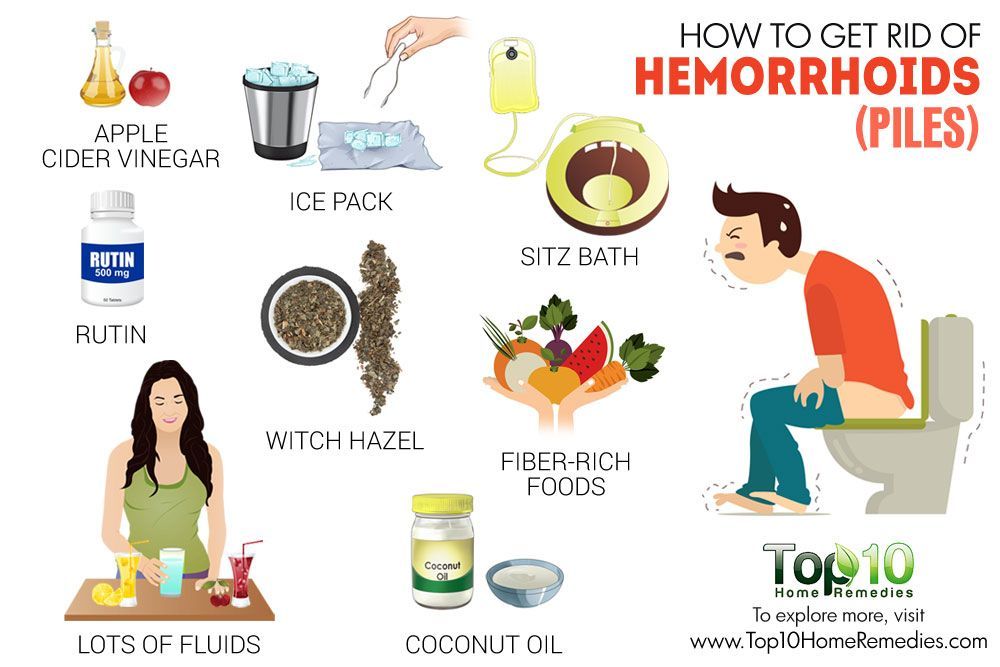 As soon as you begin to make movements, the fluid in the body accelerates and is distributed evenly throughout it, so the swelling goes away. A similar action occurs with the centuries.
As soon as you begin to make movements, the fluid in the body accelerates and is distributed evenly throughout it, so the swelling goes away. A similar action occurs with the centuries.
Being in a closed position during sleep and not moving the eyelids can potentially swell in some people who are prone to this problem. So you may wake up in the morning with unusually swollen eyelids. When you wake up and start blinking, some of the puffiness will gradually go away. Dark circles under the eyes can form due to stress or lack of sleep.
Quick relief for swelling under the eyes
There are too many reasons that cause us to cry, and to keep them in ourselves is not only harmful, but it also does not always work out. What to do if, after uncontrollable sobbing, you urgently need an important event? Or did you wake up in the morning with puffiness under your eyes, and two hours later you have to go to work and have an important meeting? There is an exit.
- One of the quickest and easiest remedies is washing with cold water.
 The contrast temperature will help reduce swelling quickly. For a more targeted effect, ice or something cold can be applied under the eyes.
The contrast temperature will help reduce swelling quickly. For a more targeted effect, ice or something cold can be applied under the eyes. - Take a couple of drops of rosemary oil, dilute it with olive oil, then gently apply the mixture on the eyelids and under the eyes. Hold for a couple of seconds, rinse off the remnants with a damp cotton pad. Rosemary is an excellent anti-inflammatory agent, and olive oil will further moisturize the skin.
- Milk “baths” are an excellent compress for puffiness. Swabs soaked in cold milk should be kept under the eyelids for 5-10 minutes.
- In summer, regular cucumber slices can be the first remedy for swollen eyelids. For a more pronounced effect, it can be ground into a kind of gruel.
Lightly tap or massage the area to stimulate blood flow
You can increase blood flow to the affected area by gently tapping or massaging around the eyes:
- Work the pressure points on the brows for a few seconds before moving your fingers from the inner corner of the eye to the outer.
 This helps drain the inflamed area.
This helps drain the inflamed area. - Then tap the sinuses with two fingers on each hand, starting on both sides of the nose and moving outward. You may even feel fluid movement in the area.
- You can also lightly massage the lymph nodes in your neck to improve fluid flow. Move down, away from your face, in a smooth motion and don’t press too hard.
- Continue with general massage for about 3 minutes and repeat for several days if necessary.
Top eye puffiness products
More in Eye Care
Professional & Pharmacy Products
Some brands of professional cosmetics produce special eye creams, one of the effects of which is to relieve fatigue and eliminate puffiness. You can pick up such products in the Fitomarket “Face Care” section of the online store. Regular intake of vitamin E will help restore skin elasticity, smooth wrinkles and get rid of swelling in the eye area. In addition, you can try massage and various types of eye exercises. They will improve blood circulation and can speed up the process of eliminating edema.
In addition, you can try massage and various types of eye exercises. They will improve blood circulation and can speed up the process of eliminating edema.
Eye drops are another way to reduce puffiness in the eyelids. They can be used to relieve any symptoms, from dryness to replenish natural tearing. There are also vasoconstrictors that can help with the redness that invariably comes with crying or allergies. To avoid further irritation, try choosing preservative-free solutions containing fewer synthetic additives. Most formulas are not recommended for contact lens wearers, so read labels carefully and consider removing lenses before use.
If you happen to have witch hazel lying around in your first aid kit. Then you should know that this astringent is great for inflammation and redness. This is a good choice of natural ingredient to combat puffy eyes. For a quick result, apply witch hazel to a cotton pad and apply it to the eye area for 5-10 minutes.
Among professional skin care products, patches under the eyes are considered a panacea in this matter. Thanks to natural extracts of green tea, aloe juice or other additives, they improve blood microcirculation, relieve inflammation and puffiness. Be sure to make sure that the package with patches indicates the presence of a draining effect, which is responsible for removing swelling from the eyes.
Thanks to natural extracts of green tea, aloe juice or other additives, they improve blood microcirculation, relieve inflammation and puffiness. Be sure to make sure that the package with patches indicates the presence of a draining effect, which is responsible for removing swelling from the eyes.
Again, cooling the eye area soothes the skin, stimulates the lymphatic system and constricts the blood vessels. Try chilling your favorite face cream or eye patch before applying. Then the effect will be stronger, and you will feel a pleasant coolness during the procedure.
Can’t get rid of puffiness? Hide her!
The skin under the eyes may swell or darken after crying. Possible consequences of a tantrum are also redness around the nose or other spots on the face. A good concealer will help mask these obvious signs and give you a fresh look through color correction.
Look for a green concealer that will successfully neutralize redness. Green is the opposite of red on the color wheel, causing the two colors to cancel each other out. You can apply the concealer to the affected areas and blend well with your fingers or a cosmetic blender.
You can apply the concealer to the affected areas and blend well with your fingers or a cosmetic blender.
Another distraction that can help hide puffiness is dark blue eyeliner. It has long been used to emphasize the whiteness of proteins. Narrowline is a technique that is similar to waterline tracking. It is sometimes referred to as “invisible eyeliner” because it mimics the natural dark area on the lash line.
You can also use pink eye shadow or blush. Pink color elsewhere on the face can reduce redness around the eyes and nose. To do this, try applying blush on your cheeks and bright lipstick on your lips. Apply blush to the cheek area after applying concealer and foundation.
Does puffy eyes mean I have some kind of disease?
If your eyelids have never been swollen before, and now you notice swelling that has arisen for no apparent reason, this may be a sign of a serious health problem. For example, patients with hypo- and hyperthyroidism may suffer from a general swelling of tissues and muscles. In addition, bulging eyes can signal a serious thyroid condition known as Graves’ disease.
In addition, bulging eyes can signal a serious thyroid condition known as Graves’ disease.
One of the symptoms of an allergy may be watery eyes, itching and swelling. Typically, such reactions occur on certain foods or chemicals. Allergies have a wide range of symptoms, including a runny nose, cough, and shortness of breath. During an allergic reaction, certain cells in the body release a chemical called histamine. Which can provoke an outflow of fluids from the blood vessels, which will lead to swelling of the surrounding tissues, including the appearance of bags under the eyes.
Puffy eyelids and dark circles under the eyes can occur if you have an eye infection such as conjunctivitis. In some cases, inflammation due to dry eye syndrome also causes swelling. Kidney failure and other systemic diseases can cause swelling throughout the body, including around the eyes.
How to treat puffy eyes
If your eyelids are painful or sensitive to the touch, the cause is most likely an infection, cyst, or stye. It is important to determine the cause of a swollen eyelid, as treatment options depend on what is causing it.
It is important to determine the cause of a swollen eyelid, as treatment options depend on what is causing it.
✅ Cyst
If your upper or lower eyelid is swollen, it could be a cyst or a chalazion. The chalazion usually swells in the middle part of the eyelid. These cysts may disappear within a few weeks and some will turn into a hard lump.
Treatment: for relief, press a damp, heated cloth, heating pad, or boiled egg against the eye. Heat helps with oil secretion and blockage of blood vessels and skin. You can do this four to five times a day. If the cyst persists, see your doctor.
✅ Barley
Styes are formed due to an infection at the base of the eyelid near the eyelashes. It can be internal or external, but often appears as a well-defined red bump. Once the pus comes out of the stye, your eye will usually get better.
Treatment: A warm compress can be used to facilitate and speed up healing. It usually goes away after a few weeks.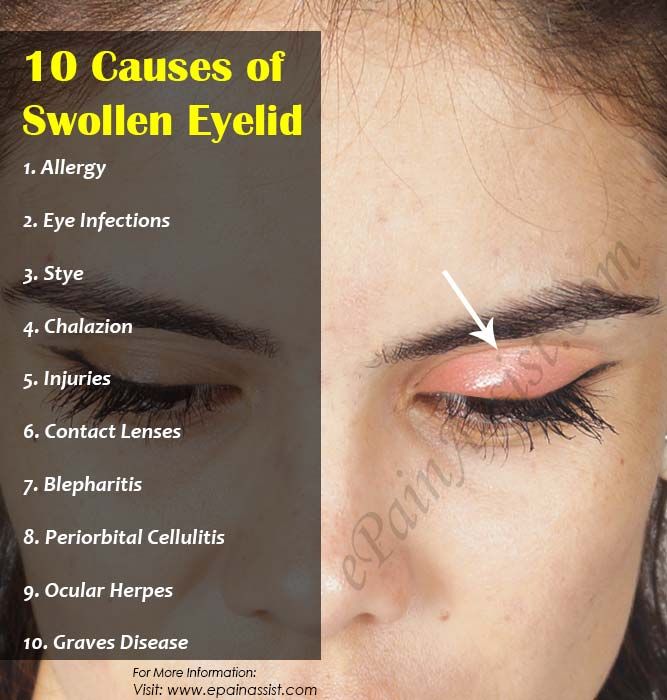 Avoid wearing makeup during a stye as this can cause reinfection.
Avoid wearing makeup during a stye as this can cause reinfection.
✅Conjunctivitis
Pink eye is caused by a bacterial, viral or allergic infection that causes inflammation on the surface of the eye. It can start in one eye and spread to both. Often, pus or sticky deposits appear on the eyelashes and in the corners of the eyes.
Treatment: you can clean sticky and crusty eyelids with warm water and cotton. The eye may heal on its own without treatment. Avoid touching your eyes during this time and keep your pillowcases clean. Avoid eye makeup and contact lenses.
The main thing is not to lose heart, the puffiness will definitely pass!
These methods will help relieve the symptoms that occur after a prolonged tantrum, accompanied by sobbing. They can also help recognize other causes of puffy eyes and distinguish between heavy tears and a serious condition. In addition to controlling the outward signs of a tantrum, it is important to understand that self-care and love are important during times of sadness or stress.

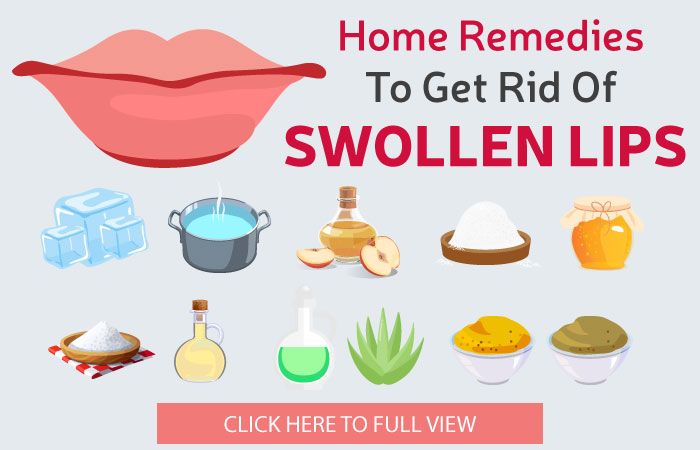

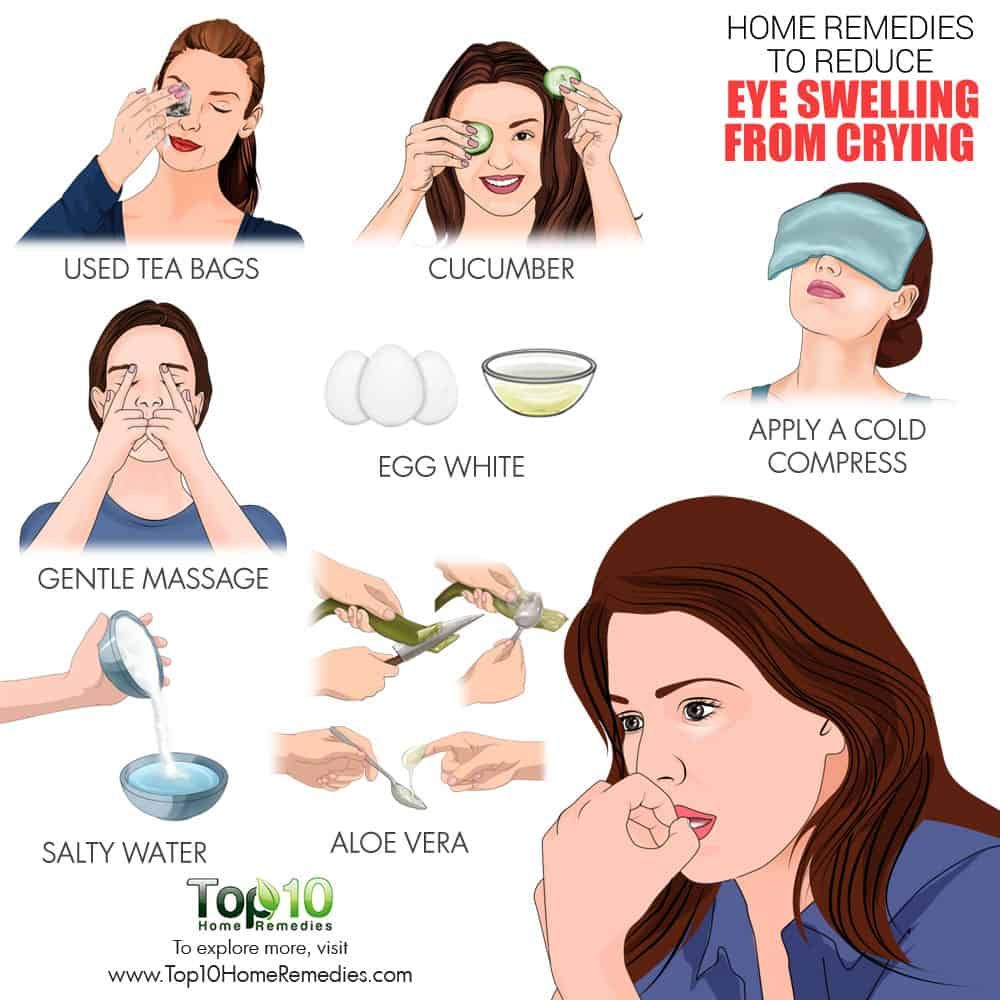
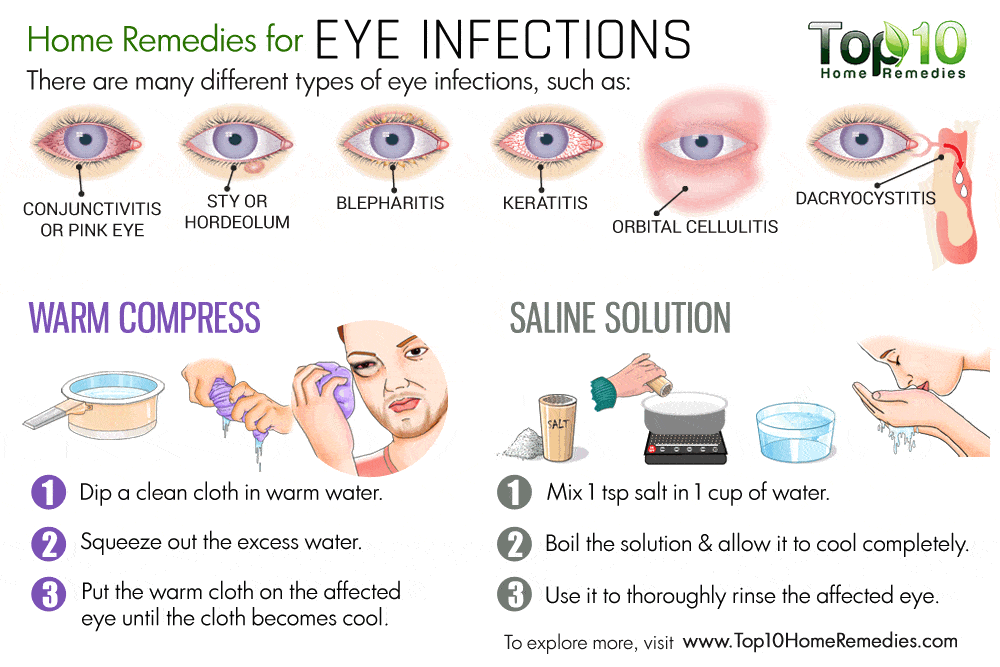 The contrast temperature will help reduce swelling quickly. For a more targeted effect, ice or something cold can be applied under the eyes.
The contrast temperature will help reduce swelling quickly. For a more targeted effect, ice or something cold can be applied under the eyes.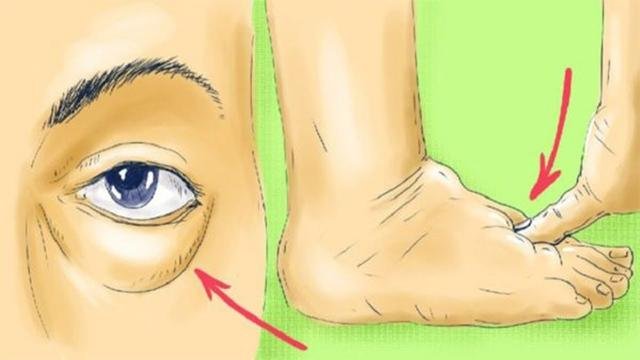 This helps drain the inflamed area.
This helps drain the inflamed area.